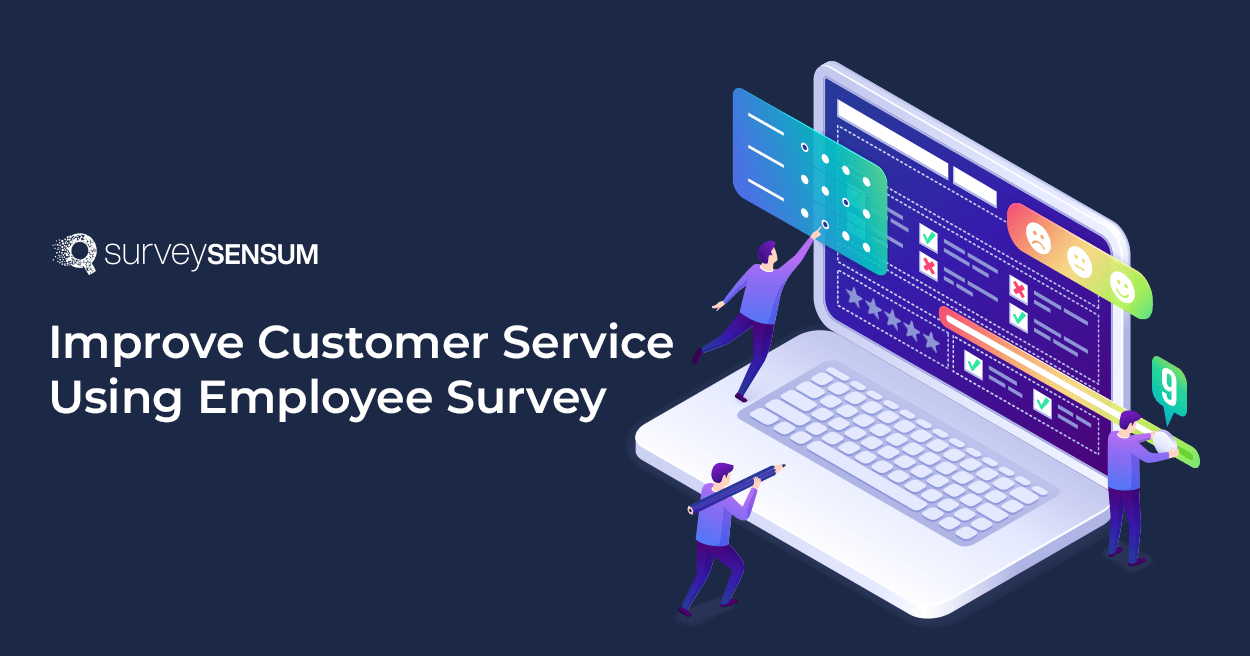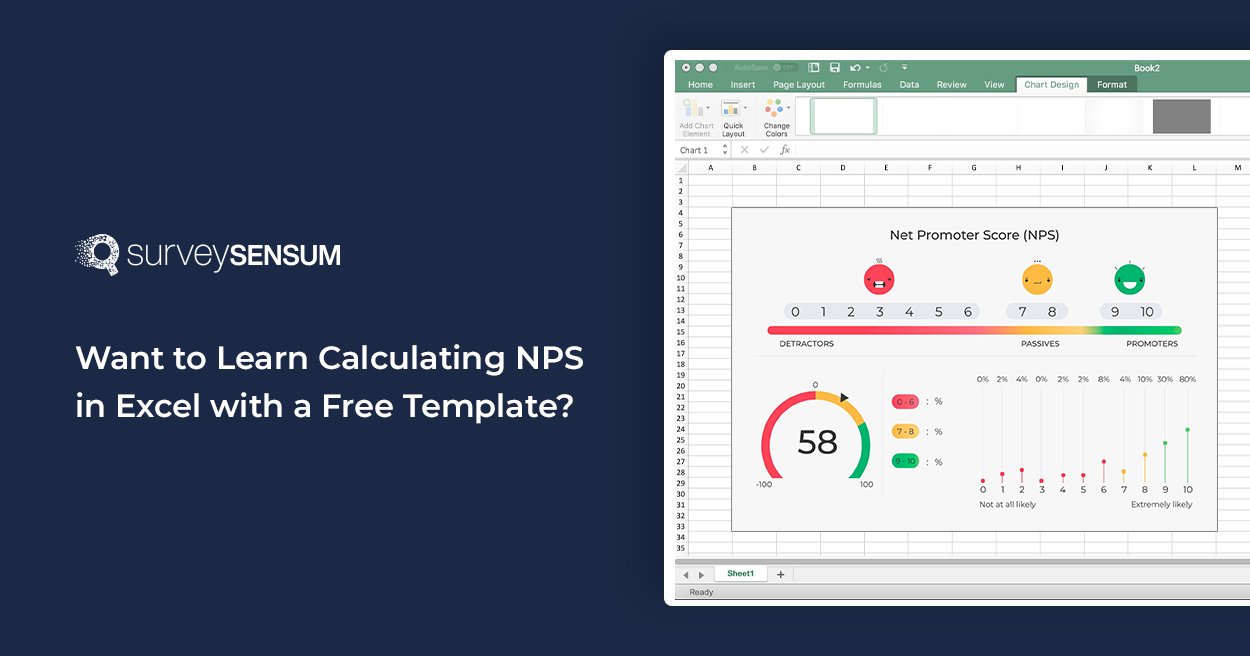
Your employees are the heart and soul of your business. They are the ones crafting your products, delivering your services, and acting as the vital link between you and your customers.
But here’s the truth: employee engagement isn’t just a nice-to-have; it’s a game-changer that can either make or break customer satisfaction.
Picture this: A disengaged employee, trudging through their workday, overwhelmed with stress, and struggling to maintain focus. The inevitable outcome? Mediocre to downright poor service to your customers. And you guessed it – low customer satisfaction follows suit.
So, what’s the silver bullet to this problem?
— Employee surveys.
Firstly, it’s a cost-effective move that helps cut unnecessary expenses. When employees are disengaged, they’re more likely to leave their jobs, and the average cost to replace them is a substantial $4,700. However, businesses don’t adopt these surveys solely to enhance the workplace environment; they also do it to elevate the quality of customer service.
Think of it this way – 71% of workers are not engaged in their jobs. When those 71% of workers perform poorly, this reflects the customer service. If your employee is unhappy or unsure of what they are expected to do, they won’t perform at their best. It’s a domino effect – everything goes downhill from there.
With this in mind, we created the following guide where you’ll learn why employee surveys matter and how you can use them to improve customer service.
Why Employee Surveys Matter?
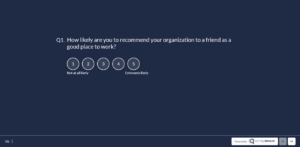
An employee survey is a questionnaire that you design to evaluate employee satisfaction, achievements, engagement, opinions, and more.
It helps you understand how content your employees are with their job and enables you to use their feedback to improve job satisfaction and motivation. These metrics are particularly important given the increase in Remote work opportunities. With global expansion services like Remote, it’s never been easier for companies to hire international talent (or for disengaged employees to seek greener pastures overseas.
This survey is valuable because it provides direct insights from those who understand your customers best – your employees.
Think of it as a domino effect: Happy employees equal happy customers. In fact, studies by McKinsey show that companies with delighted customers usually have employees who are 1.5 times more engaged.
Now, why is all this essential? Because if customers have a lousy experience, they tend to spread the word to about 15 other people. That’s a recipe for losing customers, damaging your brand, and taking a hit on your revenue. So, these surveys aren’t just about asking questions; they’re about protecting and boosting your business.
Here are some of the most common causes of poor customer experience caused by employee disengagement:
- Longer wait times: Around 90% of customers find fast reactions from support to be critical for their experience. But, if an employee is disgruntled, they are slower at finding a solution. It takes longer for the employees to handle queries and help customers, so the wait time is increased.
- Mistakes and lack of solutions: When the employee doesn’t understand the customer needs and their responsibilities at the company, they are disengaged with customer concerns. They can’t help the customers, and 78% of customers won’t make a purchase because of their poor experience.
- Unresolved issues: We’ve all heard complaints about customer service. Sometimes, the service doesn’t solve problems, gives wrong answers, or seems unhelpful. When employees are unfocused or stressed, they may not listen well to customers. This leads to wasted time for customers who have to explain their issues repeatedly. According to a Harvard Business Review study, if a customer complaint is handled in less than 5 minutes, that’s a customer that will go on to spend more at the company in the future.
- Rude and disgruntled employees: Around 75% of customers are irritated when they deal with rude customer service agents. There’s nothing worse than communicating with a business where the representative is rude and disgruntled. This scares away most customers.
7 Types of Employee Surveys that can Improve Customer Service
Let’s get to action now. If you’re looking for a way to boost your customer service, you should start with your employees. Here are the 7 main types of employee surveys that can help you achieve this goal.
1. Time Preference Survey
A Time Preference Survey is a research tool or questionnaire designed to assess an individual’s or a group’s time preferences.
Time is a crucial factor in employee performance. It affects everything from the employee’s productivity to their stress levels to the quality of customer service they offer. Implementing effective Time Tracker Software including hoteling software can help organizations optimize time management and enhance their employees’ overall productivity. Integrating a productivity tracker can further enhance employee performance by providing insights into work habits and identifying areas for improvement.
Imagine an employee with a packed schedule. This can lead to reduced performance, missed deadlines, and growing frustration. Eventually, that frustration spills over into the service they offer to your customers.
This is why businesses are making a rotating shift schedule for employees using tools like Agendrix – to evade problems and tiredness and maximize their performance. With a finely tuned employee schedule, businesses can offer high-quality customer service, including 24/7 coverage.
This type of survey will help you understand the preferences of your employees in terms of peak working hours, working capacity, and more. With that data on hand, Agendrix can help you create and organize schedules and track work hours, therefore making the job easier for your employees.
Time Preference Survey Question Examples
- Are you more productive in the morning, evening, or afternoon?
- How long can you work without a break without feeling tired?
- Do you feel that the work break is sufficient to refuel and keep working?
- What do you think would be the ideal working schedule for you?
2. 360-Degree Feedback Surveys
A 360-degree feedback survey, often referred to as a 360-degree assessment or multi-rater feedback, is a comprehensive performance evaluation tool used in organizations to gather feedback on an individual’s skills, behaviors, and performance from multiple perspectives.
The employee completes the survey by doing a self-reflection, and they are evaluated by customers, partners, suppliers, and/or managers. For example, providing feedback to your manager fosters a transparent communication channel, where both employees and managers can openly discuss strengths, weaknesses, and areas for development. Ultimately this leads to a more constructive and mutually beneficial relationship.
Basically, you’d be asking the employees what best works for them and how they perform best. You can then use this information to improve their engagement and with it, your customer service.
360-Degree Survey Question Examples
- Do you communicate well with your colleagues?
- Do you feel like the company values your contributions and work?
- Are you happy working with us?
- Do you feel like you are well compensated for your work?
- Do you like the benefits package we offer?
Boost Employee Satisfaction with SurveySensum – Request a Demo
3. Workplace Culture Survey
A Workplace Culture Survey is used to gather feedback from employees regarding the prevailing culture, values, atmosphere, and safety within the workplace.
These surveys provide employers with insights into how their team perceives the workplace environment. To encourage candid feedback, these surveys are typically conducted anonymously, allowing employees to freely express their opinions about workplace culture and conditions.
By implementing such surveys, you’ll get insight into how inclusive your company’s culture is. You can see how people collaborate, learn about the successes or failures of your management, and find new ideas to improve the situation.
These days, 25% of employees feel disengaged while in the work environment. This makes for a quarter of employees in companies, and this has a detrimental effect on their performance, as well as their morale and productivity.
An employee who enjoys going to work and spending their time at a company is satisfied. It is that employee who will offer amazing customer service, not a person who’s annoyed by his colleagues, the work conditions, or the company’s culture.
Workplace Culture Survey Question Examples
- Do you enjoy the company’s culture?
- Are you motivated by our company’s mission?
- Do you feel like you belong at work?
- Do you feel connected to your work?
4. Employee Engagement Survey
How engaged are your employees? How satisfied are they with the employee benefits you offer? Can they find a balance between life and work?
These are just a few examples of what you should be asking your employees. If they lack engagement, aren’t happy with what you offer, and can’t find enough time to rest, you can’t expect them to be great with customers, can you?
The impact of employee engagement on customer satisfaction is grand nowadays., especially in industries such as food, beverage, technology, media, agriculture, telecom and IT recycling. This determines how the employee will deal with the customer, whether they’ll be focused enough to help or professional enough to do their job.
Also, providing career advancement opportunities is a win-win scenario for both, employee and employers. Employers should always be willing to support their employees transitions into a new position and offer opportunities for professional advancement, international assignments, cross-functional projects, global training programs and define a clear project scope for their initiatives. That is something that directly impacts employee engagement. In regard to that, if the companies are willing to find a way how to manage corporate travel efficiently, while facilitating smooth and hassle-free business trips, then employees may have found a great fit and opportunity for long-term employment. Additionally, integrating initiatives like creating photo books from business trips can enhance company culture and foster lasting memories for employees. By adding a background changer option, employees can effortlessly enhance their photos, turning simple memories into visually stunning narratives.
One valuable tool for assessing and addressing these aspects is the Pulse Survey, also known as an Employee Pulse Survey.
This survey method involves brief and frequent assessments conducted by organizations to collect timely feedback from employees. Unlike traditional annual or biannual engagement surveys, pulse surveys are more frequent, often occurring monthly or quarterly. They aim to provide organizations with real-time insights into employee experiences and concerns, enabling proactive responses to improve the workplace environment and employee satisfaction.

Employee Engagement Survey Question Examples
- Are you excited about coming to work?
- Are you satisfied with how the decisions are made at our company?
- Do our vision and our values inspire you to work?
- Do you find the work of our company meaningful?
5. Business Process Feedback Survey
Another thing you should be asking your employees is questions about the business process. An employee who doesn’t understand their responsibilities or the process of doing business is much more likely to make mistakes that ruin the quality of your customer service.
This type of survey will tell you if your employees have all the necessary tools to offer quality customer service. It will show you if they know what is expected of them. You can learn if they know how to deal with different problems and answer different questions.
Business process feedback surveys offer insights that can help you structure the organization better. You can use the data you obtain to further train your employees, assign the right person to the right job, and boost their performance.
Business Process Feedback Survey Question Examples
- On a scale of 1 to 5, how satisfied are you with the efficiency of our current order processing system?
- What specific challenges or issues have you encountered while using our expense reimbursement process?
- How would you rate the clarity of our project initiation process in terms of setting clear goals and expectations?
- What improvements would you suggest for our customer onboarding process to enhance the client experience?
- Are there any bottlenecks or delays you’ve experienced in our inventory management process that you believe need attention?
6. ENPS Survey
Employer Net Promoter Score surveys are a tool designed to gauge the loyalty and satisfaction levels of employees. This survey system is based on the Net Promoter Score framework, which involves asking as few as two questions to assess employee sentiment.
From the survey results, employees can be categorized into the following groups:
- Promoters – Those who provide a score of 9 or 10.
- Passives – Those who give a score of 7 or 8.
- Detractors – Those who assign a score of 6 or less.
Here are some examples of survey questions commonly used in eNPS surveys:
- On a scale from 0 to 10, how likely are you to recommend our company as a place of work to others?
- Please explain why you chose this rating.
These questions help employers gather valuable feedback and insights from their employees about their overall experience with the company, allowing for the identification of areas for improvement and opportunities to enhance employee satisfaction and loyalty.
Launch ENPS with SurveySensum – Request a Demo
Enhancing Your Customer Service through Strategic Surveys: A Step-by-Step Guide
You can’t know which questions to ask or what type of survey to conduct unless you know what your specific business needs. To help you, we’ve created a step-by-step guide for creating and implementing your survey.
Step 1: Mapping the customer touchpoints
To enhance your customer service, it’s crucial to understand every interaction your customers have with your business. Begin by identifying touchpoints, from their initial visit to your website to interactions with your online support or in-store employees, and even communication via email. Create a comprehensive list of the various stages in the customer journey.
Step 2: Identifying Employee Interactions
Identify all employees who interact with customers, both directly (such as customer support agents) and indirectly (like designers, marketers, and sales representatives). Compile a list of individuals with a role in shaping the customer experience, excluding those who don’t directly engage with customers, such as maintenance teams or product managers.
Step 3: Crafting Concise Surveys

When creating surveys, focus on specific areas you aim to improve. Keep the surveys concise to avoid overwhelming employees. The goal is to gather valuable insights without making the process burdensome for your staff.
Step 4: Determining Survey Channel
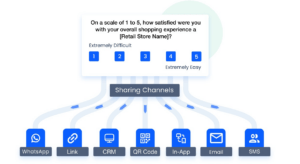
Decide how you will administer the surveys. Will you distribute them via email, conduct in-person surveys, or leverage social media and corporate portals? Choose the method that best suits your organization’s communication channels and employee preferences.
Step 5: Data Analysis and Action
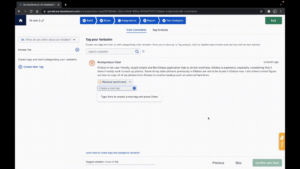
Collect and analyze survey data thoroughly. Ensure that you integrate this feedback with other data sources for a holistic understanding of your customer service. Remember, the key to improving the customer experience lies not only in asking employees about their satisfaction but also in taking proactive steps to enhance it.
By following these steps and taking action based on employee feedback, you can proactively improve your customer service, fostering greater satisfaction and loyalty among your employees.
Are You Ready to Improve Customer Service?
In conclusion, customer service is the lifeblood of any successful business. It directly impacts customer satisfaction, loyalty, and ultimately, the bottom line. As we’ve seen, employee engagement plays a pivotal role in delivering exceptional customer service. When employees are motivated and clear about their roles, they can provide outstanding service that keeps customers coming back.
And when it comes to efficient, comprehensive survey management, SurveySensum’s CSAT platform is the solution of choice. It empowers businesses to launch, analyze, and act upon surveys, ensuring that employee insights are leveraged to drive continuous improvement in customer service.
With SurveySensum, you have the key to unlocking a cycle of enhanced employee engagement, superior customer service, and ultimately, business success.
Author bio: Chloe Khadra serves as a dedicated Growth Advisor at Skale. She works closely with the marketing manager, sales manager, finance manager, HR team, and co-founder within the business development team to contribute to Skale’s growth and success. Her role involves managing Lead Qualification, crafting business proposals, and overseeing the partnership program. Chloe places a strong emphasis on teamwork and values collaborative efforts.






